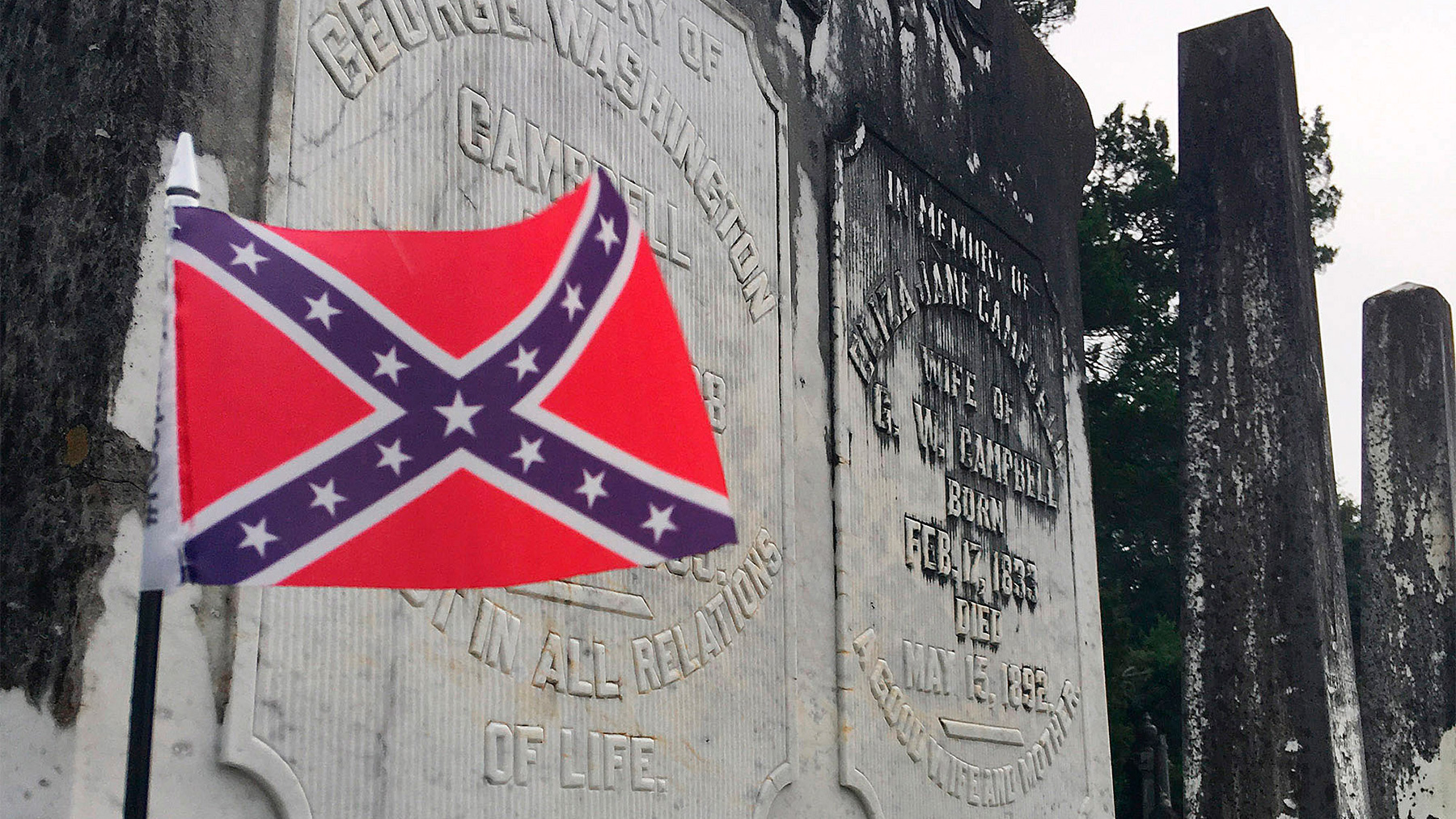The SPLC launched a digital initiative this month that seeks to correct the false narratives of the “Lost Cause” mythology, which idolizes people who fought against the United States in order to preserve slavery.
Multiple Southern states proudly devote public time, energy and resources to celebrate the Confederacy each year. North Carolina and South Carolina celebrate “Confederate Memorial Day” on May 10. Kentucky, Louisiana and Tennessee celebrate it on June 3. Texas celebrates on Jan. 19, while Alabama, Florida, Georgia, Mississippi and – recently – Livingston, Tennessee, dedicate all of April to “Confederate History Month.” Alabama, Georgia, Florida and Mississippi also celebrate “Confederate Memorial Day” on various dates in April.
These celebrations honor traitors who sought to maintain oppression in the United States. The SPLC is seeking to counter the false narratives behind these celebrations by sharing facts about the strategies that white supremacists repeatedly employ to literally keep their “heroes” on a pedestal.
The initiative highlights grassroots efforts around the country to remove Confederate memorials and shares articles and lessons about American slavery and Civil War history from the SPLC’s award-winning Teaching Tolerance project, whose mission is to help teachers and schools educate children and youth to be active participants in a diverse democracy. The digital initiative is also promoting stories on social media from everyday Americans who are advocating against celebrations of the Confederacy.
“Since the Charleston massacre, 115 Confederate monuments and symbols have been removed from public spaces. That is not an accident and does not mean that the lessons of history will ever be forgotten. It’s an insult to African Americans to even imply such a thing,” said Heidi Beirich, director of the SPLC’s Intelligence Project, which monitors hate groups and other extremists in America. “But Americans as a whole are slowly recognizing that these symbols actually represent hate, not heritage.
“Whether the person depicted supported the ‘Lost Cause’ or Southern pride, Confederate symbols dedicated to those who fought to defend slavery belong in places like museums where they can be examined in their proper context, not in public spaces such as government land, schools or parks,” Beirich said. “If we truly want to strengthen this country’s future, we need to start by holding honest debates about our history – and finally expose these so-called heroes.”
Branded as “preserving history,” the “Lost Cause” is actually state-sponsored propaganda designed to romanticize the Confederacy as if it were a noble venture, instead of an unsuccessful effort to prolong the enslavement of African Americans. The SPLC joins grassroots organizations in recognizing the truth about the “Lost Cause” by highlighting people who are currently leading the fight to remove these symbols of intimidation and oppression from their public spaces, and by providing information about how others can get involved.
Each Thursday this month, Teaching Tolerance will feature articles and suggestions for K-12 educators that offer insight into the “Lost Cause,” states’ rights, and the concept of historical malpractice. “Set in Stone” offers food for thought by discussing the complex lessons of muddled history and regional pride surrounding the “Lost Cause,” while challenging people to “hear” what these monuments are saying – both intentionally and unintentionally.
“As we learned in our 2018 report examining state standards and classroom practices for teaching American slavery, schools are in desperate need of better resources and training to teach the hard truths of slavery, including its roles as the central cause of the American Civil War and in creating and sustaining white supremacy,” said Maureen Costello, director of Teaching Tolerance. “The monuments were erected in the years after the war by those who wanted to deny full citizenship to African Americans by celebrating those who fought to keep them in subjugation. We offer a suite of resources to help point schools in the right direction, and we will be sharing them on social media throughout the month of April.”
The SPLC will also organize communities around a “Week of Action” from April 22-26, with petition drives dedicated to removing Confederate monuments across the U.S. The SPLC created its digital initiative to motivate supporters by featuring people who have successfully removed Confederate symbols from public spaces. Look for #LoseTheLostCause and #WhoseHeritage hashtags across all social media platforms, acknowledging just a few of the people and institutions that have courageously embraced the need to remove symbols of white supremacy.
The SPLC also invites Americans to review its Whose Heritage? Public Symbols of the Confederacy report, which catalogs examples of monuments, statues, flags, city, county and school names, as well as other symbols that honor the Confederacy, and the SPLC encourages people to share that information. According to the report, there are currently 1,747 Confederate symbols and 722 monuments still in place across the U.S.
Photo by Jay Reeves/AP Images



